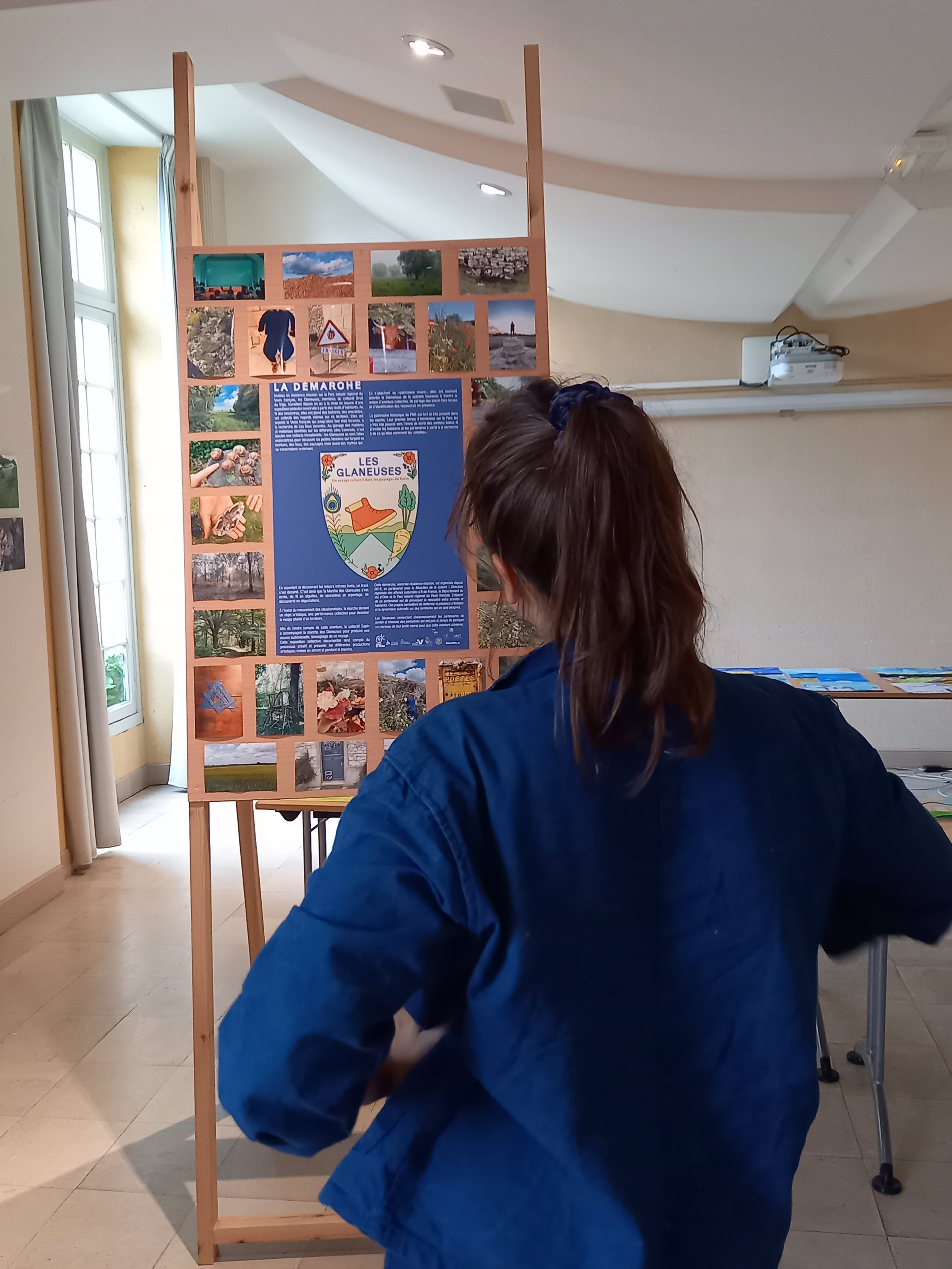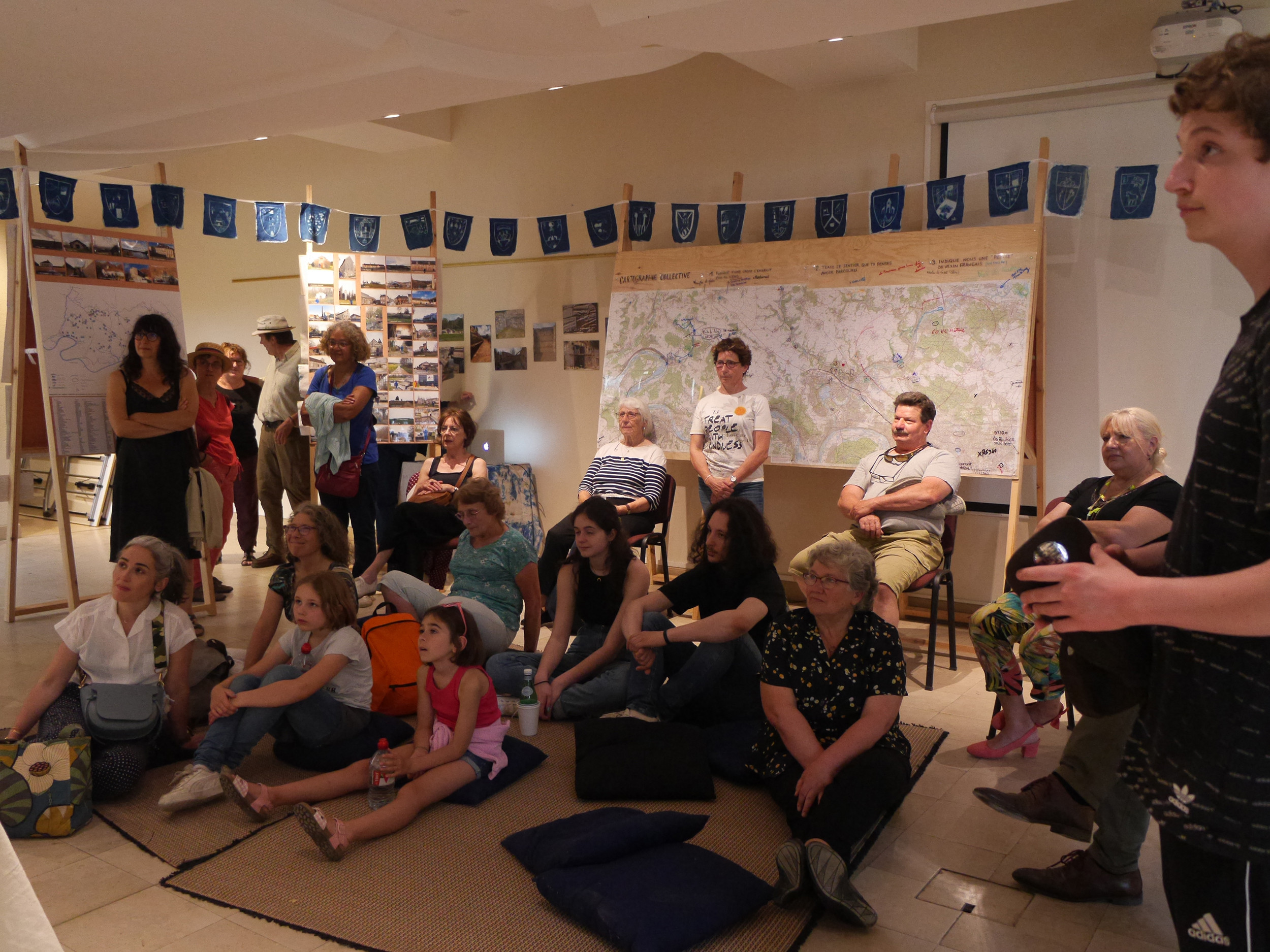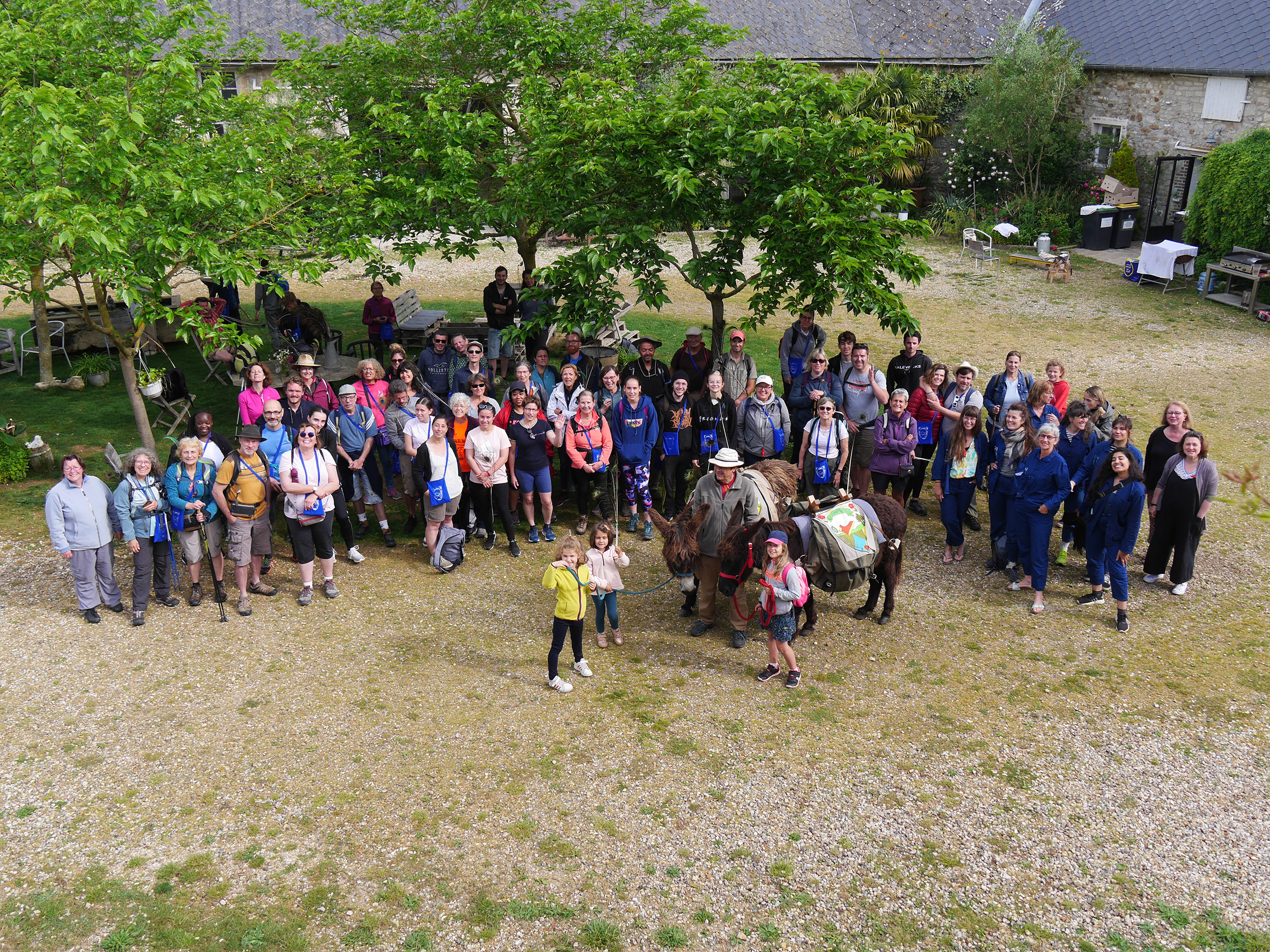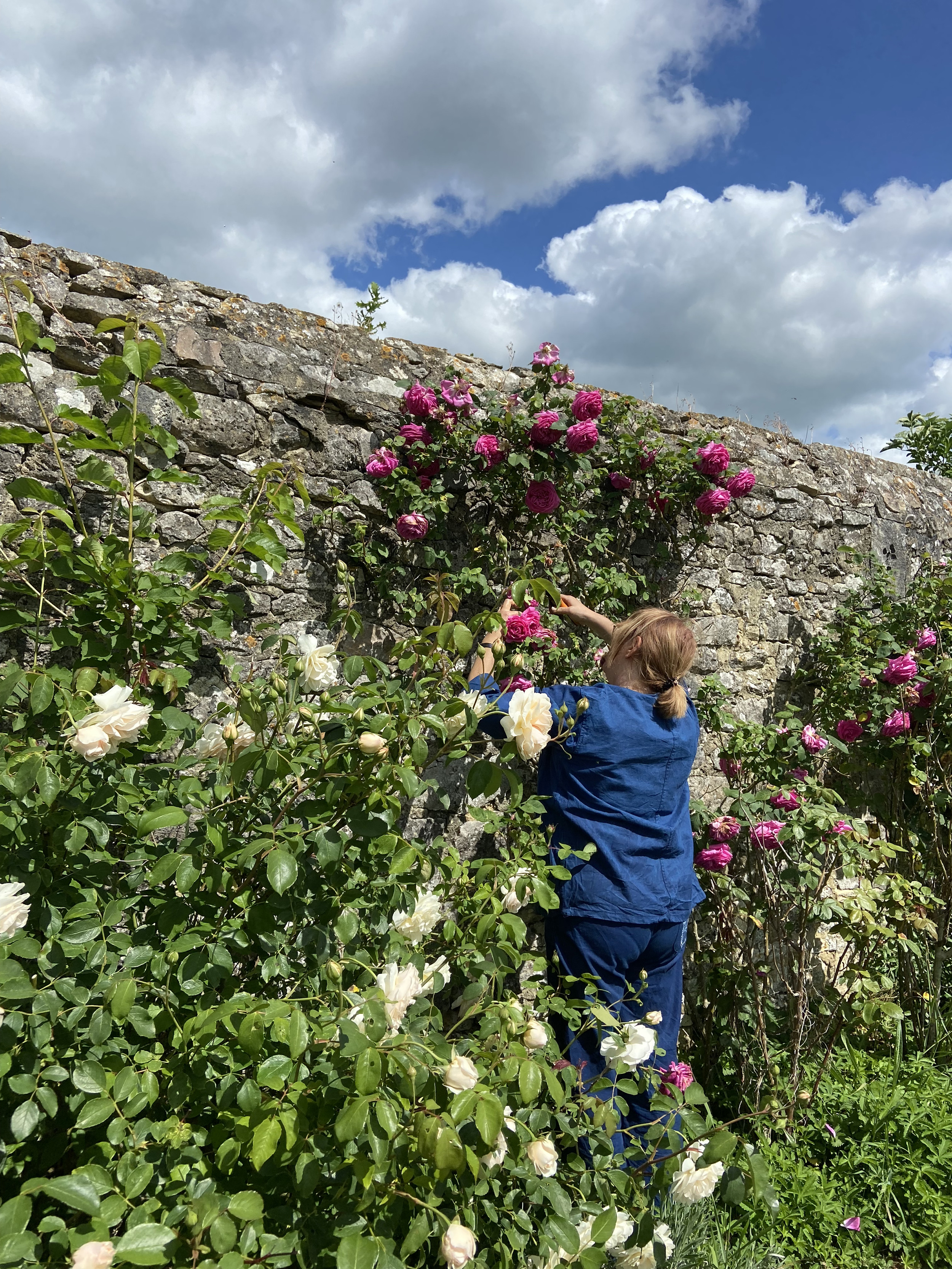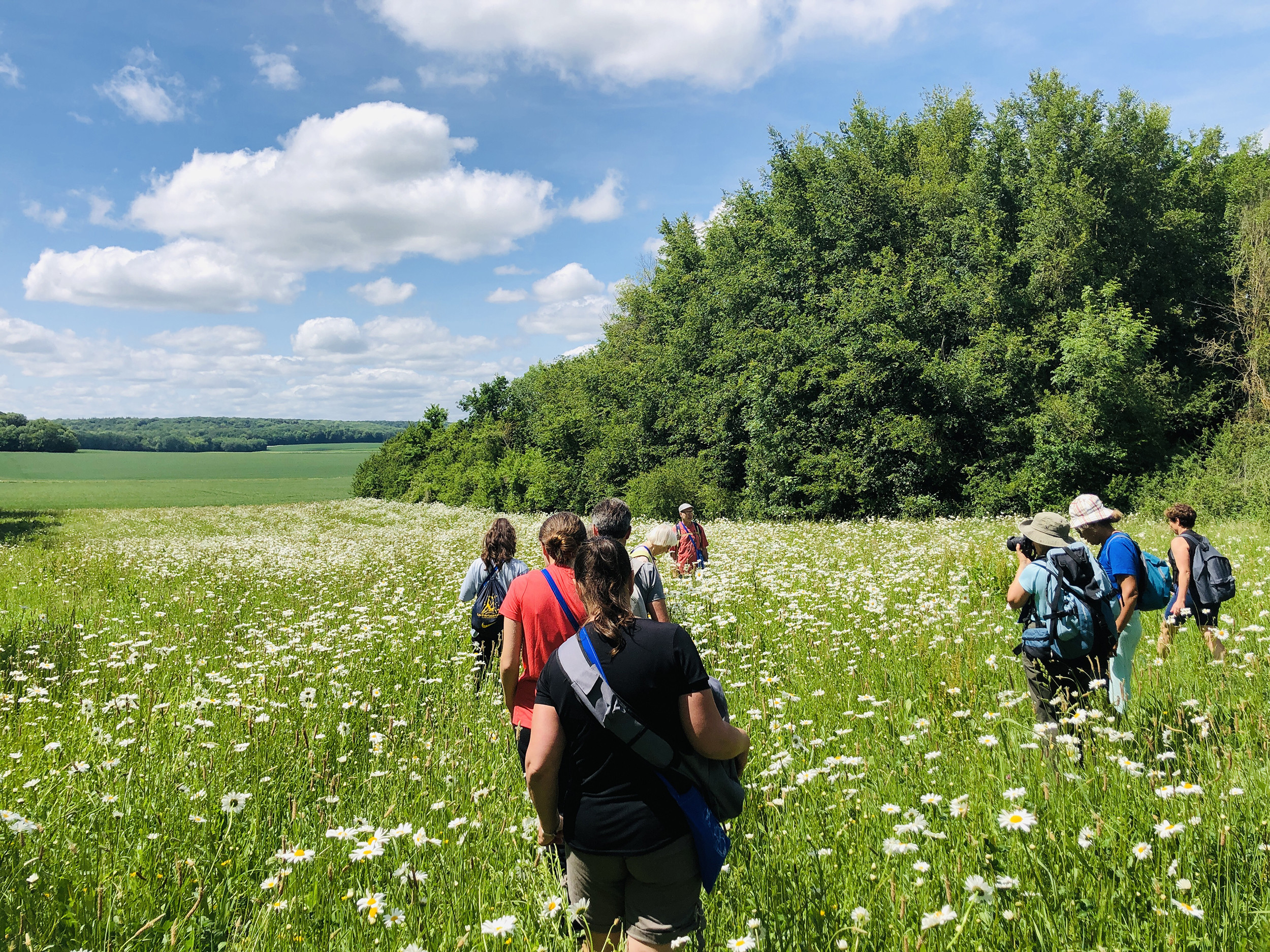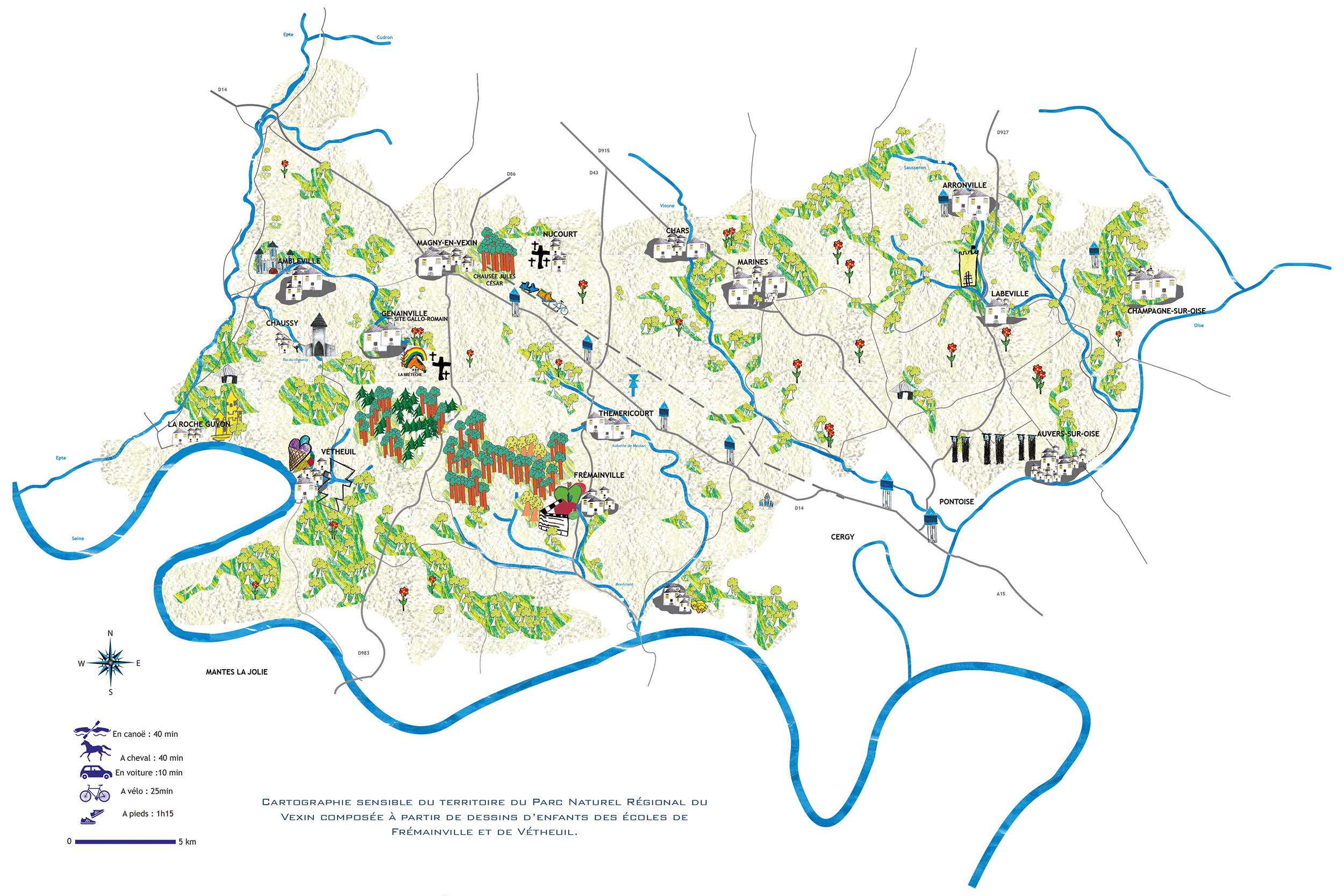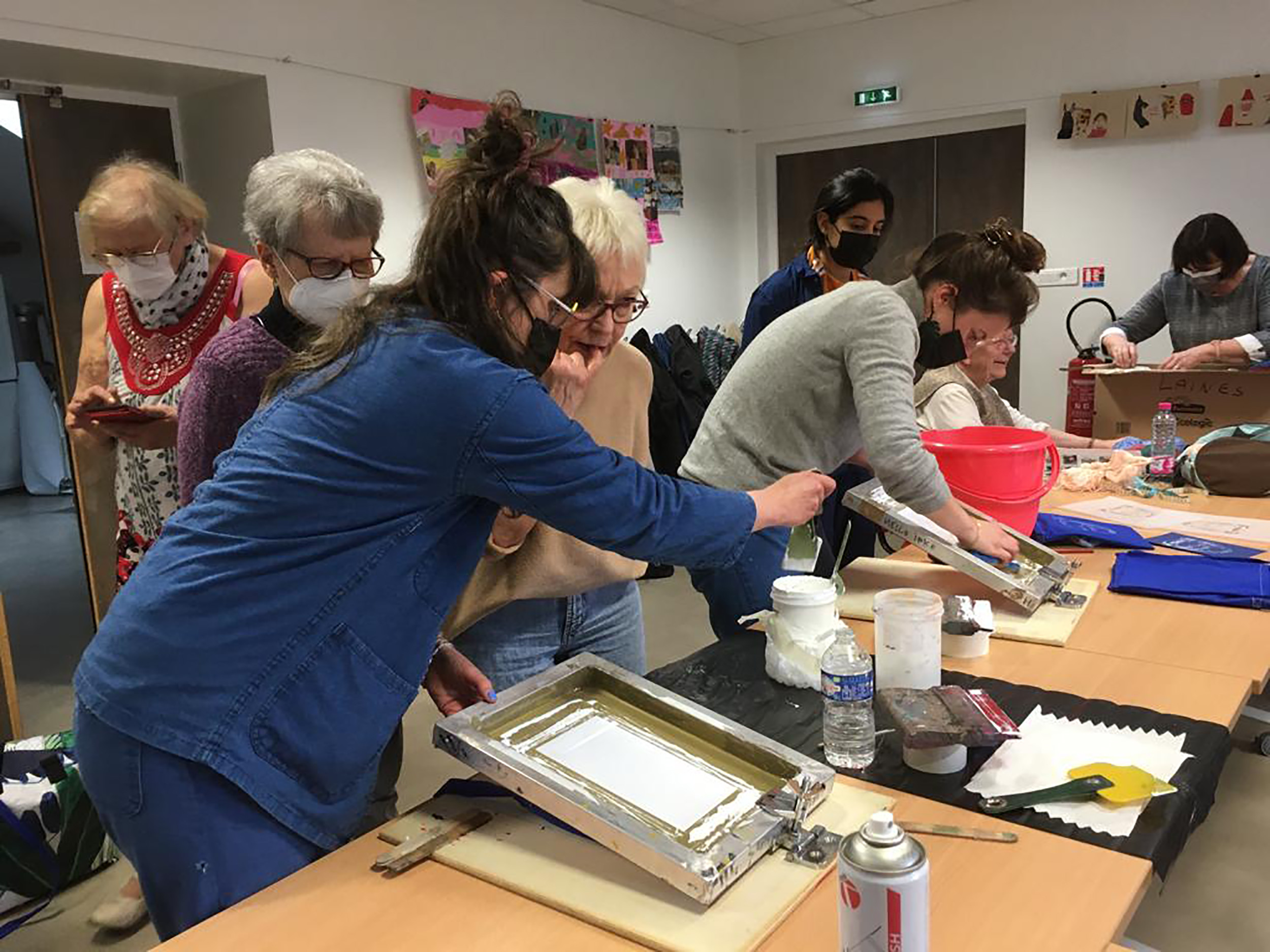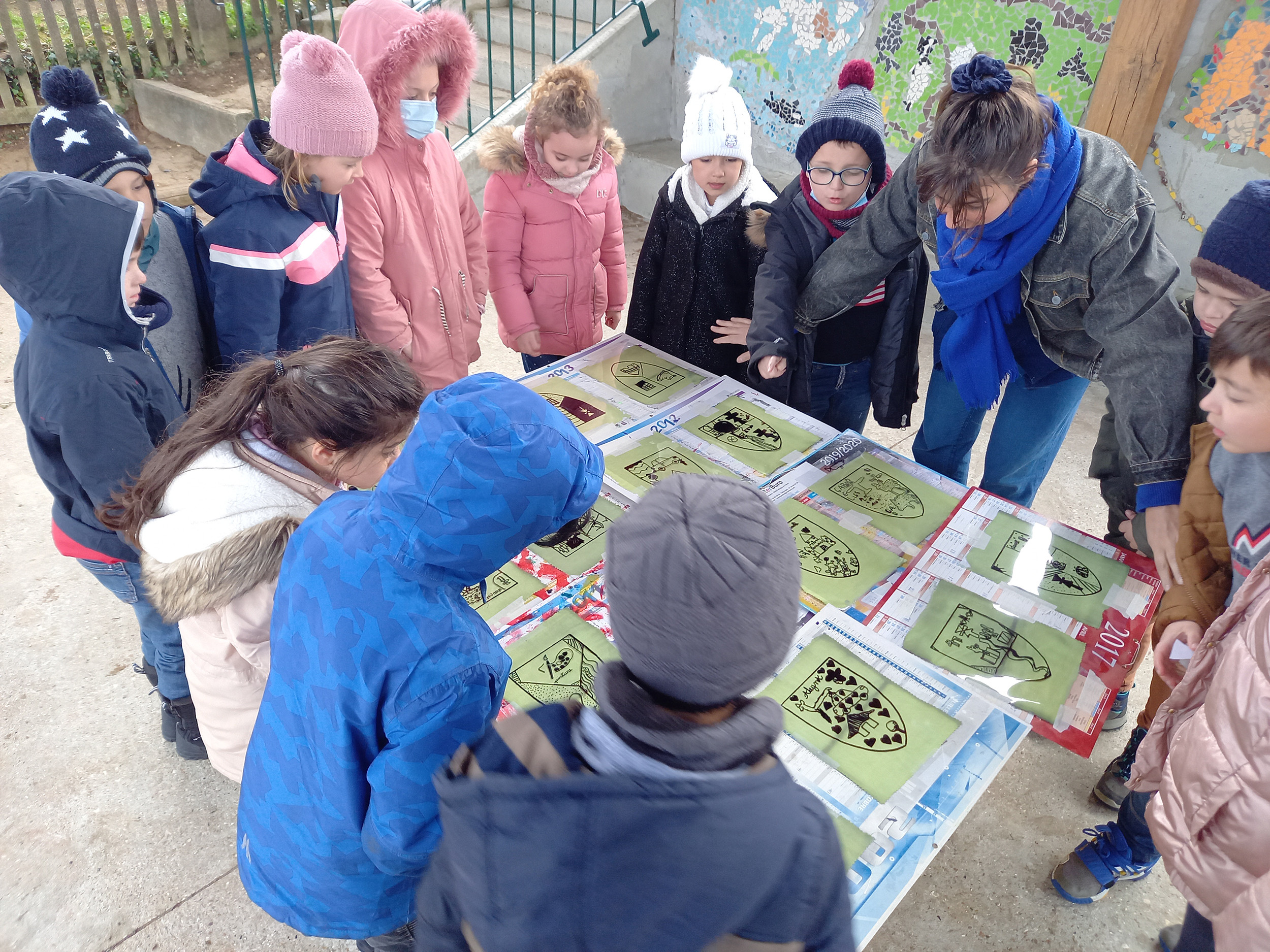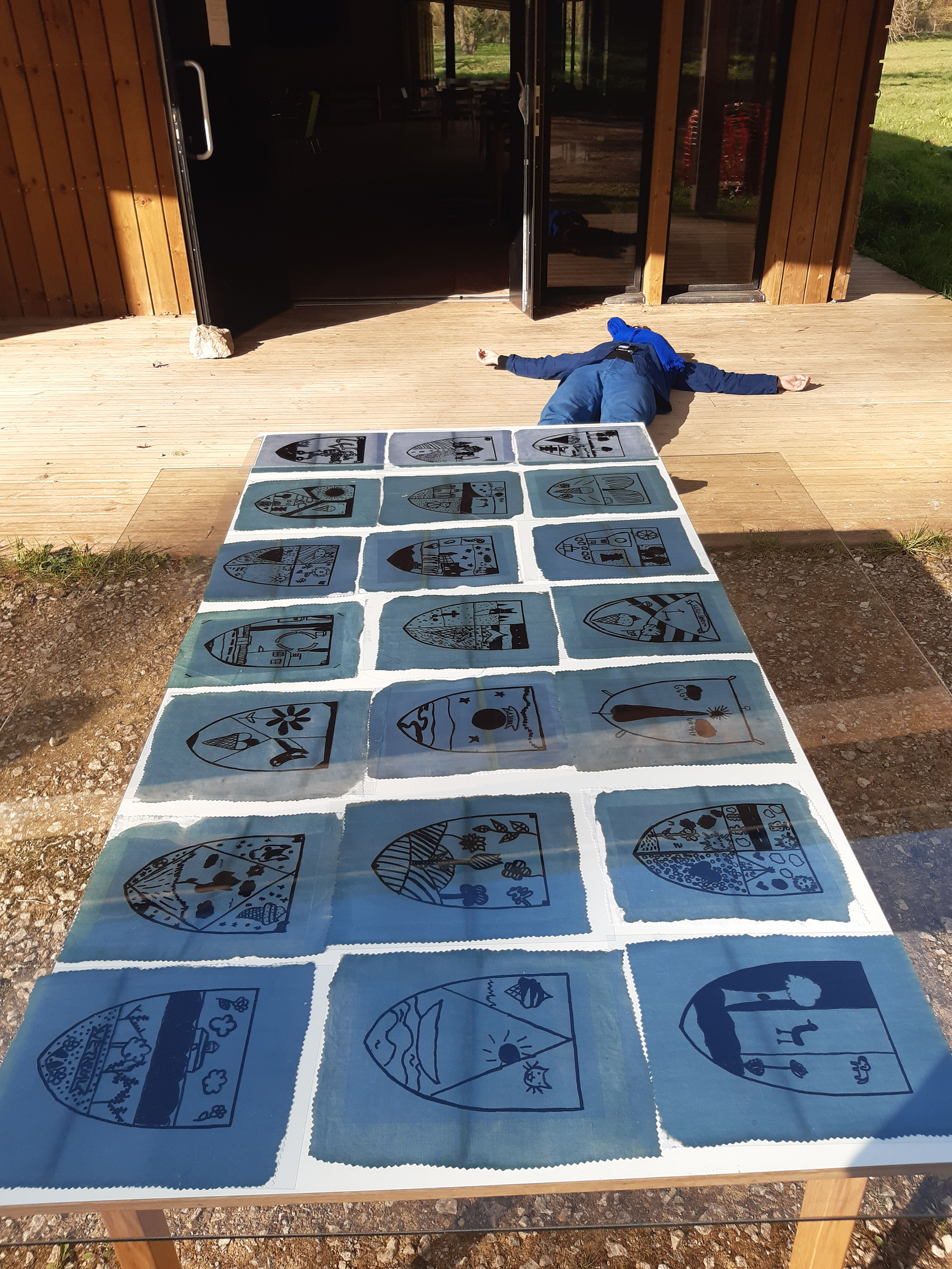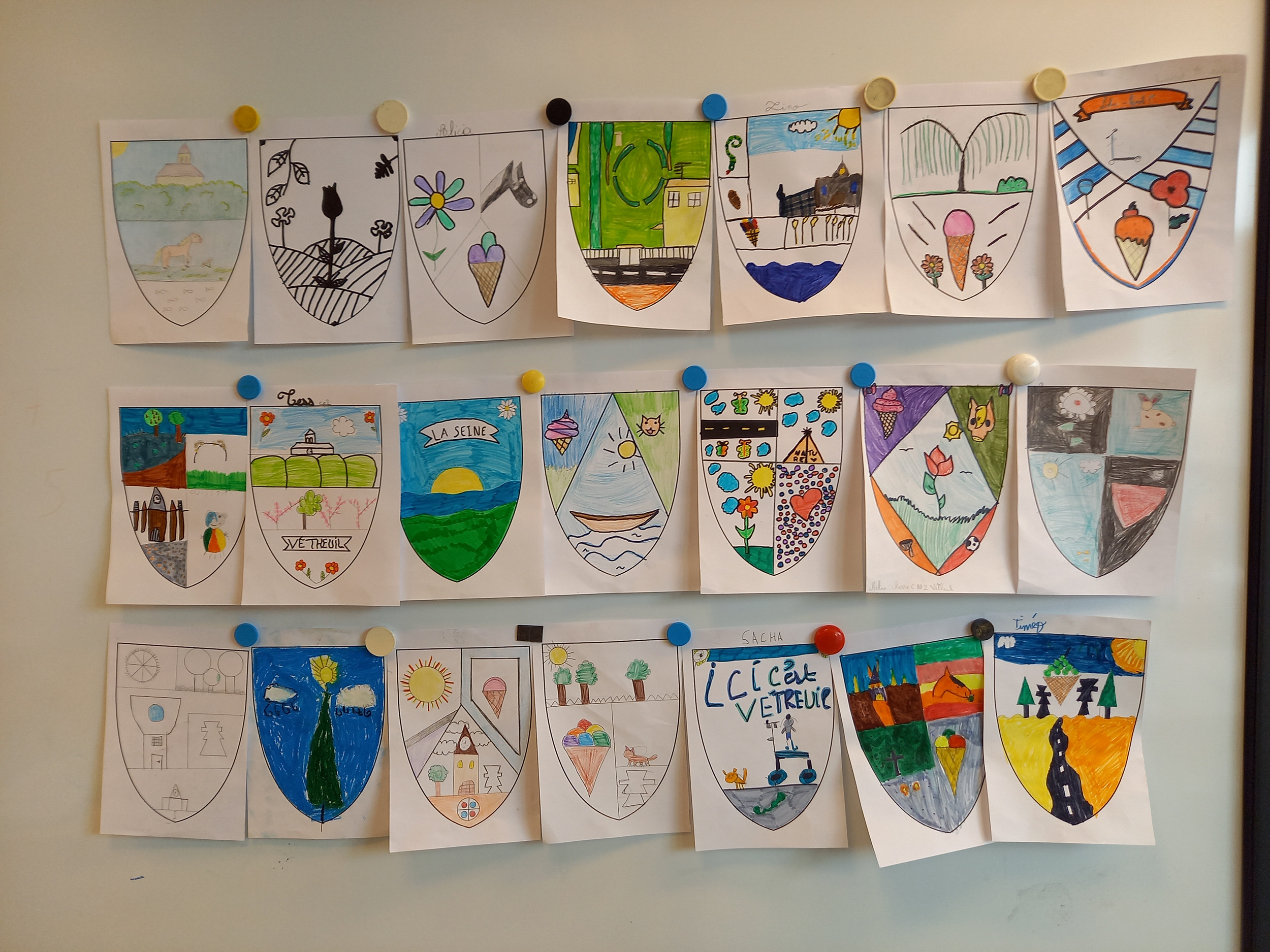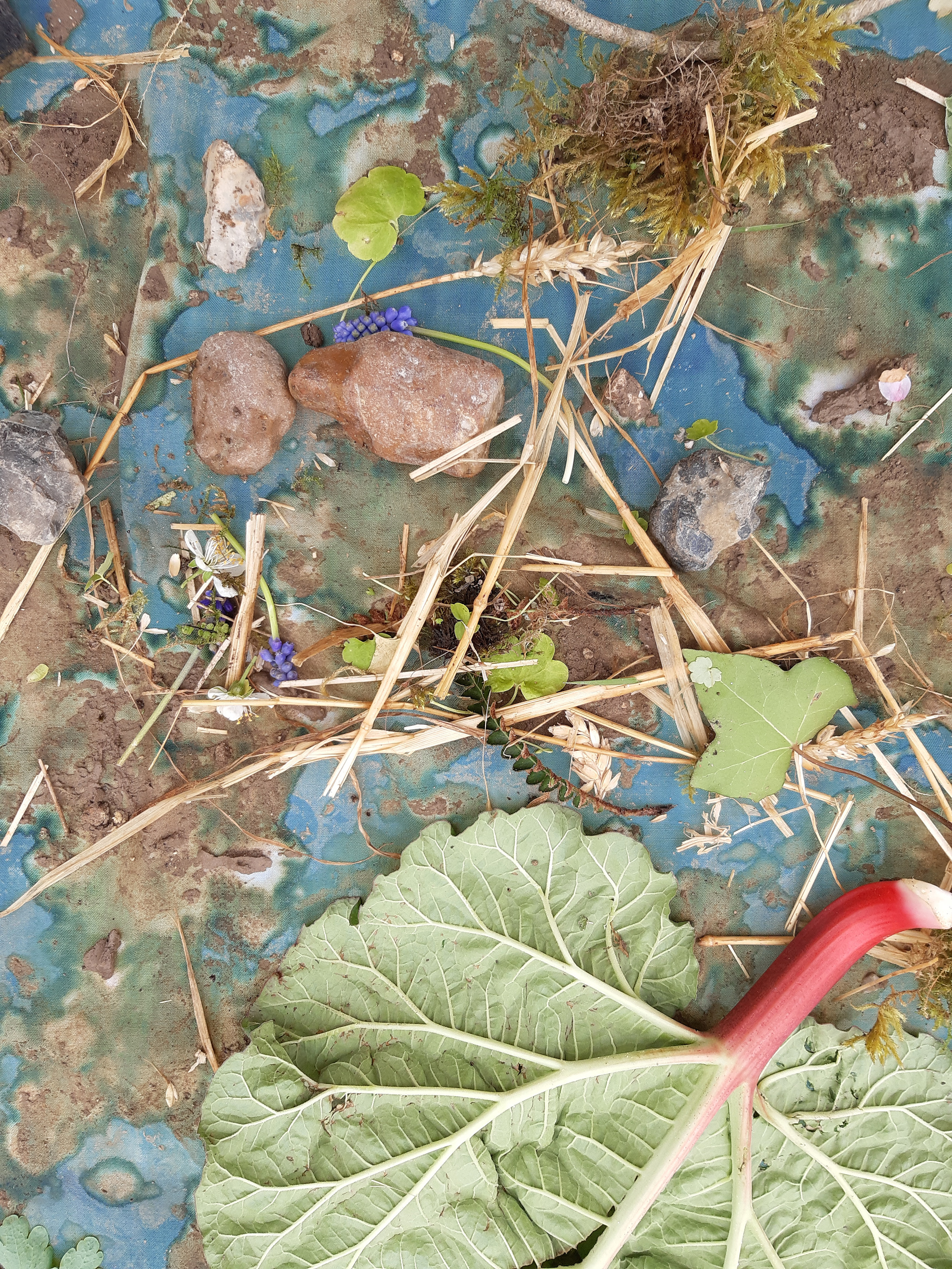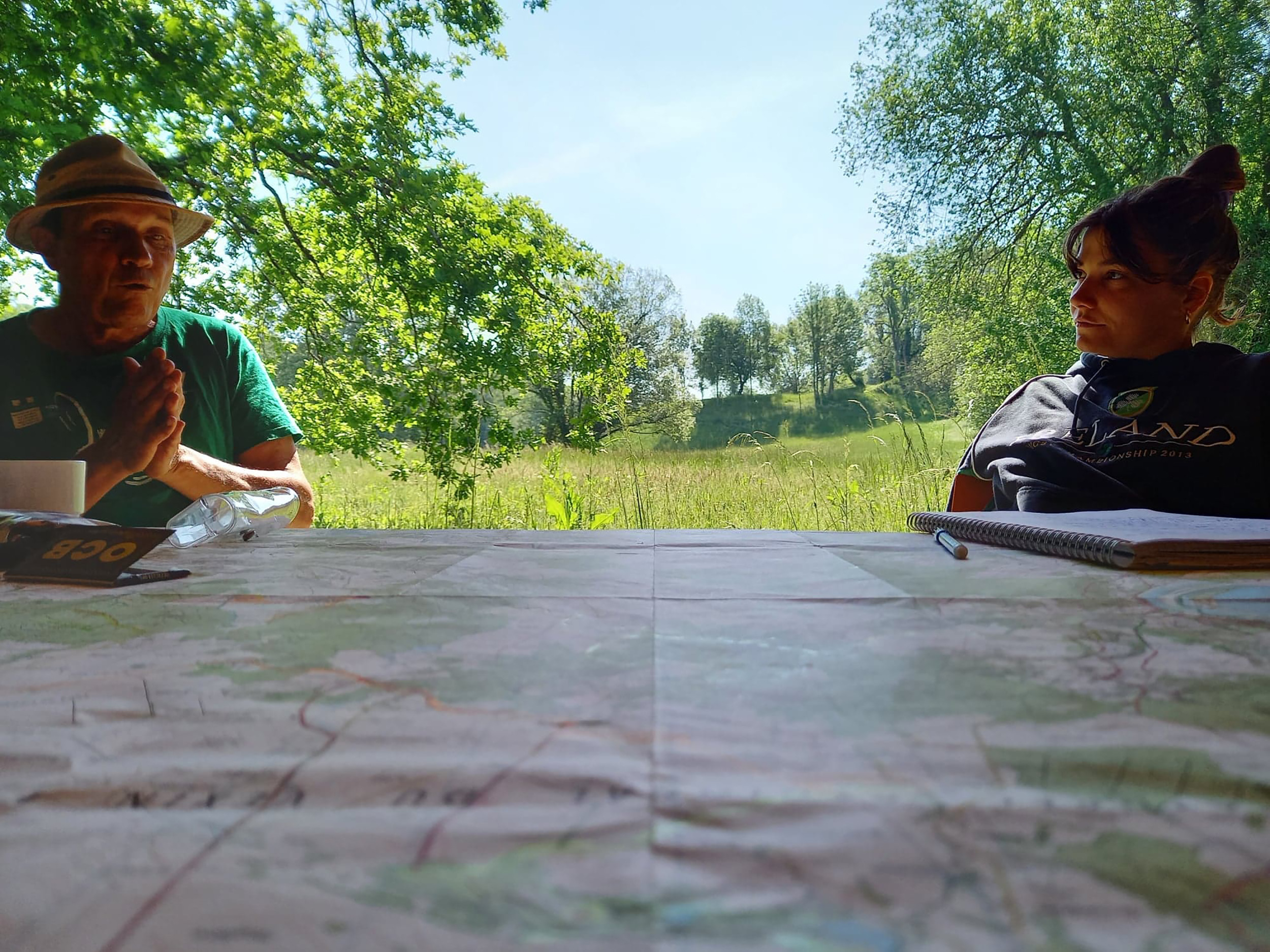

A collective journey through the landscapes of the French Vexin
2 days walking and 1 night in a bivouac – 21 and 22 May 2022
Restitution exhibition on Saturday 4 June 2022
The context :
Invited for a mission residence in the French Vexin Regional Nature Park, the Gleaners, members of the Bruit du frigo collective, have been working for a year on the implementation of a walking expedition based on the stories of the inhabitants. In the course of their encounters, they have gleaned stories and anecdotes, and have collected intimate views of this territory. They walked through the French Vexin, which until then had been unknown to them, in search of these told places. In addition to gleaning the materials identified on the various sites they visited, they also collected immaterial material : the Gleaners became explorers to discover the little stories that forge this territory, places, landscapes but also myths that are passed on orally.
By focusing on “living heritage”, they wanted to address the theme of happy sobriety through the notion of collective adventure, sharing of local know-how and identification of the resources present.
The historical heritage of the NRP is strong and very present in people’s minds. Their first immersion in the Park quickly led them to the desire to get off the beaten track and to invite the inhabitants and partners to go in search of what they call “nuggets”.
By surveying and discovering the intimate treasures that were handed over, a route took shape. This is how the Gleaners’ walk was written, from thread to needle, from meetings to surveys, from discoveries to tastings.
Following the example of the situationist movement, the walk became an artistic object, a collective performance to draw the plural face of a territory.
In order to document this adventure, the Sapin collective accompanied the Gleaners’ walk to produce an audiovisual work, a testimony to this journey.
A collective exhibition documented the creative process and presented the different artistic productions created before and during the march.
Workshops :
In addition to surveying and discovering the territory, there were workshops on artistic practices with partner schools and associations. These workshops fed the collection of nuggets and made it possible to compose the scenography of this exhibition and the contents of the walkers’ kit. This approach made it possible to raise awareness of the territory’s resources, the reuse of materials as a creative medium and frugal printing techniques.
First of all, a correspondence was established between the schools of Vétheuil and Frémainville and the Gleaners. The artistic team sent 3 postcards. Each of them represented one or more elements of the landscape of the Regional Nature Park with a short text telling an anecdote. The classes then worked on the representation of these elements of the landscape with a constraint: represent them with only 5 colours: blue, yellow, orange, green and black.
The collected works were compiled to form a collective cartography, a sensitive interpretation of the vexinois landscape.
At the end of this exchange of letters, the Gleaners met with the children to work on the identity of the territory: How to situate oneself, to apprehend one’s environment? How can we give an account of a sensitive perception and illustrate our territory? A work on the coat of arms was carried out with the pupils using the cyanotype printing technique on fabric.
This work with the pupils led to a day of meetings, walks and workshops between the two schools on 20 May 2022. The pupils in turn gleaned natural material to make a collective tablecloth using the Japanese method of tataki zome.
These workshops were also conducted with the children of the association la Source Villarceaux.
At the same time, the Association Loisirs Culture de Champagne sur Oise (ALCC) made the blue tote bags thanks to the workshop les mains agiles. 150 bags were made. The Gleaners then invited the seamstresses to discover silk-screen printing during a specific workshop. The Walk coat of arms was able to decorate the fabric bags as well as the uniform of the gleaners.
The Gleaners’ walk :
The Gleaners’ walk is a collective expedition whose route was drawn from the conversations and nuggets collected.
On Saturday, two walks were proposed : one starting from Fremainville, the other from Vétheuil, which converged towards the same stopping point in Genainville. The evening banquet allowed the two groups to meet up and discuss the walk they had experienced before setting off again, together, on Sunday morning on a single route.
The two days of exploratory walking on 21 and 22 May invited the participants to connect the landscapes of the Vexin, to share a banquet, to spend the night in the heart of a 13th century farmhouse and then to set off again together, grouped together, to reach one of the emblematic and historic sites of the French Vexin : the domain of Villarceaux.
In turn, the participants were invited to become Gleaners of this territory, to set out to collect images, memories, raw and sensory material to unearth or share their nugget of the French Vexin!
They are 100 walkers who met to give life to this adventure and share with the Gleaners a piece of the territory of the French Vexin. Thank you to them and to the guides for their enthusiasm and the moments they shared.
This approach, called a residency-mission, has been organised since 2018, in partnership with the Ministry of Culture – Île-de-France Regional Directorate of Cultural Affairs, the Val d’Oise Department and the French Vexin Regional Nature Park. The objectives are to strengthen the presence of artists and to create a dynamic by encouraging meetings between actors and inhabitants through artistic and cultural awareness.
Suburban Walks
An extraordinary journey
into the ordinariness of our contemporary cities
A dive into the urban interstices
The Suburban Walks are exploratory walks through the outskirts of the cities. They cross and connect hybrid and fragmented landscapes, composed of housing estates, social housing complexes, old towns, expressways, industrial and commercial areas, car parks and electricity pylons, but also unexpected parks and gardens, forgotten forests, old paths and especially uncountable abandoned spaces where wild nature develops, out of sight. This diffuse and involuntary nature represents a tremendous potential for escape and resourcing, a kind of exoticism of proximity.
The suburbs, a land of adventure and exploration
The suburban area has developed to respond effectively to our modern needs for housing, travel, consumption and production.
The resulting chaotic urbanism is often considered useful but uninteresting, and above all devoid of the qualities that make up the city and the pleasures it provides.
However, the urban outskirts have richness to reveal, resources that could change our viewpoint and practices, and build a sense of suburbanity : a huge territory, a great diversity of landscapes, an unsuspected architectural heritage…
Could we not, from this point of view, consider the suburban area as a land of adventure and exploration, like the great natural spaces ? And imagine hiking in the outskirts as we do in the mountains or in the countryside ?
The suburbs offer a new hiking experience. The hybrid and eclectic nature of the territories crossed, where places, atmospheres and sounds follow one another like a continuous zapping, constantly stimulates our senses and gives the walk a new dynamic.
The origin of the project
In 1999, Yvan Detraz, then an architecture student and co-founder of Bruit du frigo, led a 3-month, 1000 km walking expedition through the Bordeaux suburbs to map neglected spaces and paths. Before Google map and with the help of a simple geographical map, this mission sought to reveal the potential for escape from the Bordeaux suburbs and to develop a walking culture. (see “Zone sweet zone”).
It is from this founding experience that the concepts of the Suburban Walk and the Suburban Refuge were born.
If in 1999, nobody imagined hiking in the middle of the housing estates or along the ring road, today more and more curious people want to discover their city differently by venturing off the beaten track.
The collective suburban walks that we organise around Bordeaux bring together a large and eclectic public : families, students, walking clubs, seniors… The Suburban Shelters, which offer a unique immersive experience, are also very successful.
It is to respond to this search for exoticism of proximity and to share our knowledge of the territory and its hidden treasures that we have created the Common Land Trail.
The Metropolitan Trails Network
The Common Lands Trail of Bordeaux is a member of the Metropolitan Trails Network, created in 2017 in Marseille, on the occasion of the exhibition about the Metropolitan Trails organized at the Mucem Museum (as part of the permanent exhibition “Connectivities”).
This national network (Paris, Marseille, Bordeaux, Avignon) was created as a continuation of the international Metropolitan Trails network (Milan, London, Cologne, Istanbul, New York…) initiated and piloted by Baptiste Lanaspeze (editor – Editions Wildproject) and Paul-Hervé Lavessière (Geographer).
The first National Assises of the Metropolitan Trails were organised on 8 November 2018 at the Mucem in Marseille.
” The Metropolitan Trails are public spaces of a new kind. Transport infrastructures, tourist facilities, off-wall cultural centres, citizen platforms, training areas… they allow us to rediscover our living spaces and to foster the emergence of a common culture.
Urban hiking is a social phenomenon, a deep-rooted movement. Coming from the worlds of art and planning, it now interests a large public.
Metropolitan trails are an international innovation, born in France. »
Extract from the website : National Network of Metropolitan Trails

Exhibition Nouvelles Saisons, arc en rêve centre d'architecture

The Gleaners
French Vexin Regional Nature Park
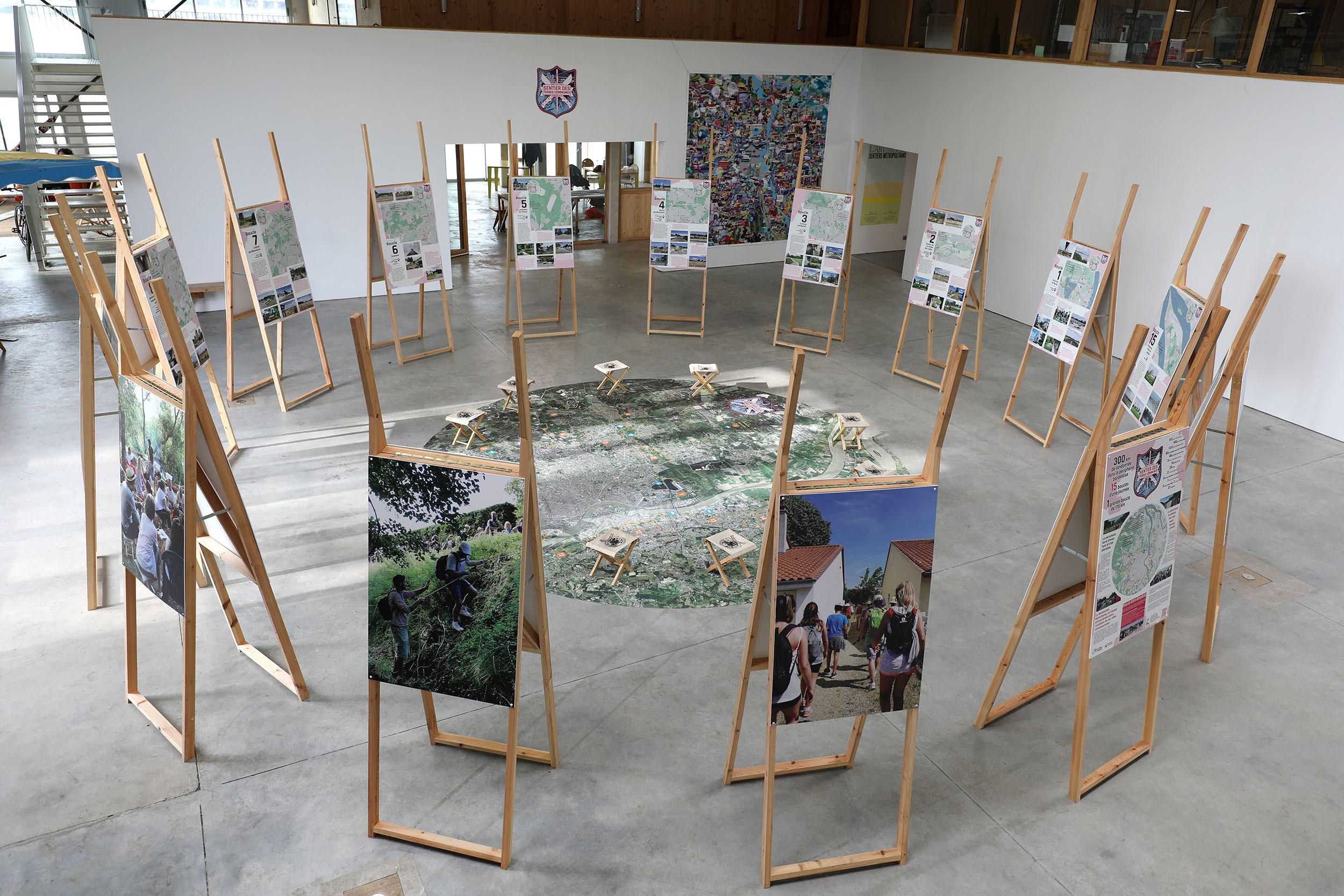
Common lands trail & Art of metropolitan trails
Cross-exhibitions Bordeaux

Hyderabad Urban Trail
Hyderabad – India

Dérive droite
The Walks of panOramas Floirac, Cenon, Lormont, Carbon-Blanc, Bassens
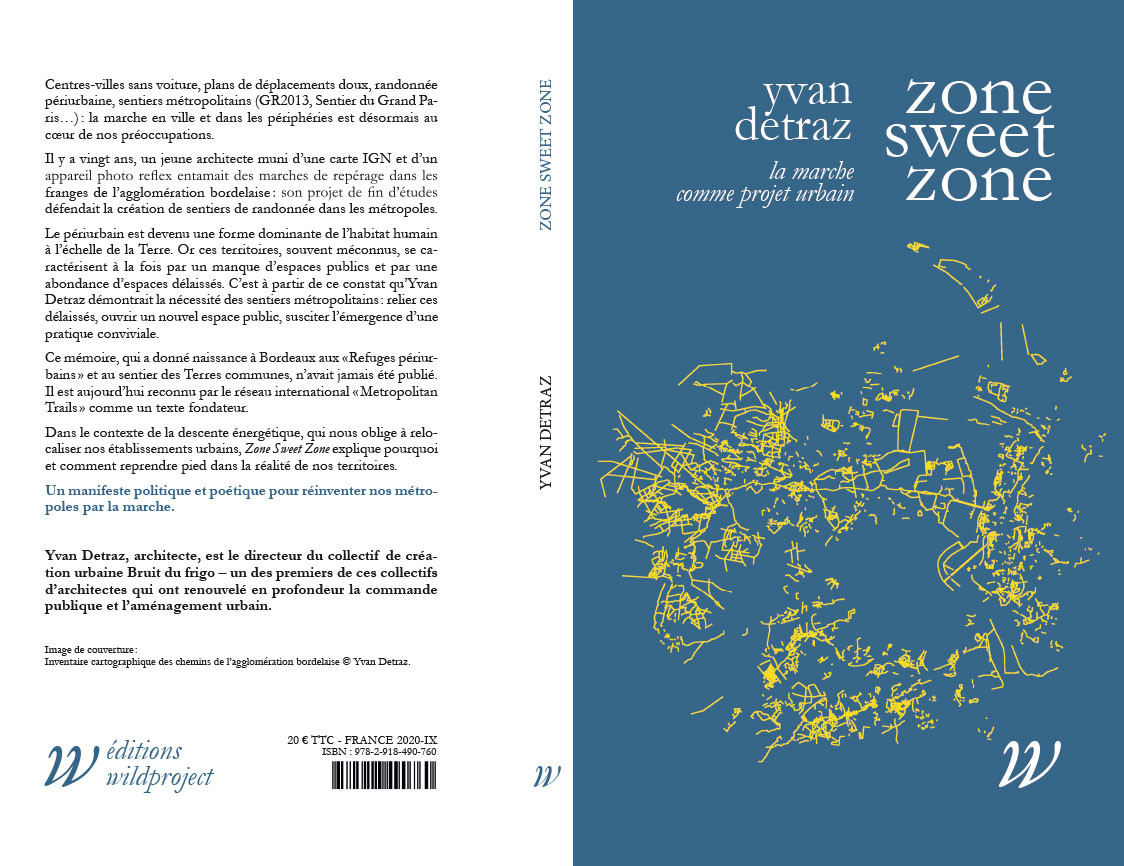
Zone Sweet Zone
Walk as urban project Bordeaux

Moving grouped
Bordeaux, Lormont

Walk around the Shelters #10
Le Haillan > Saint-Médard-en-Jalles

Common Lands Trail
Great Bordeaux
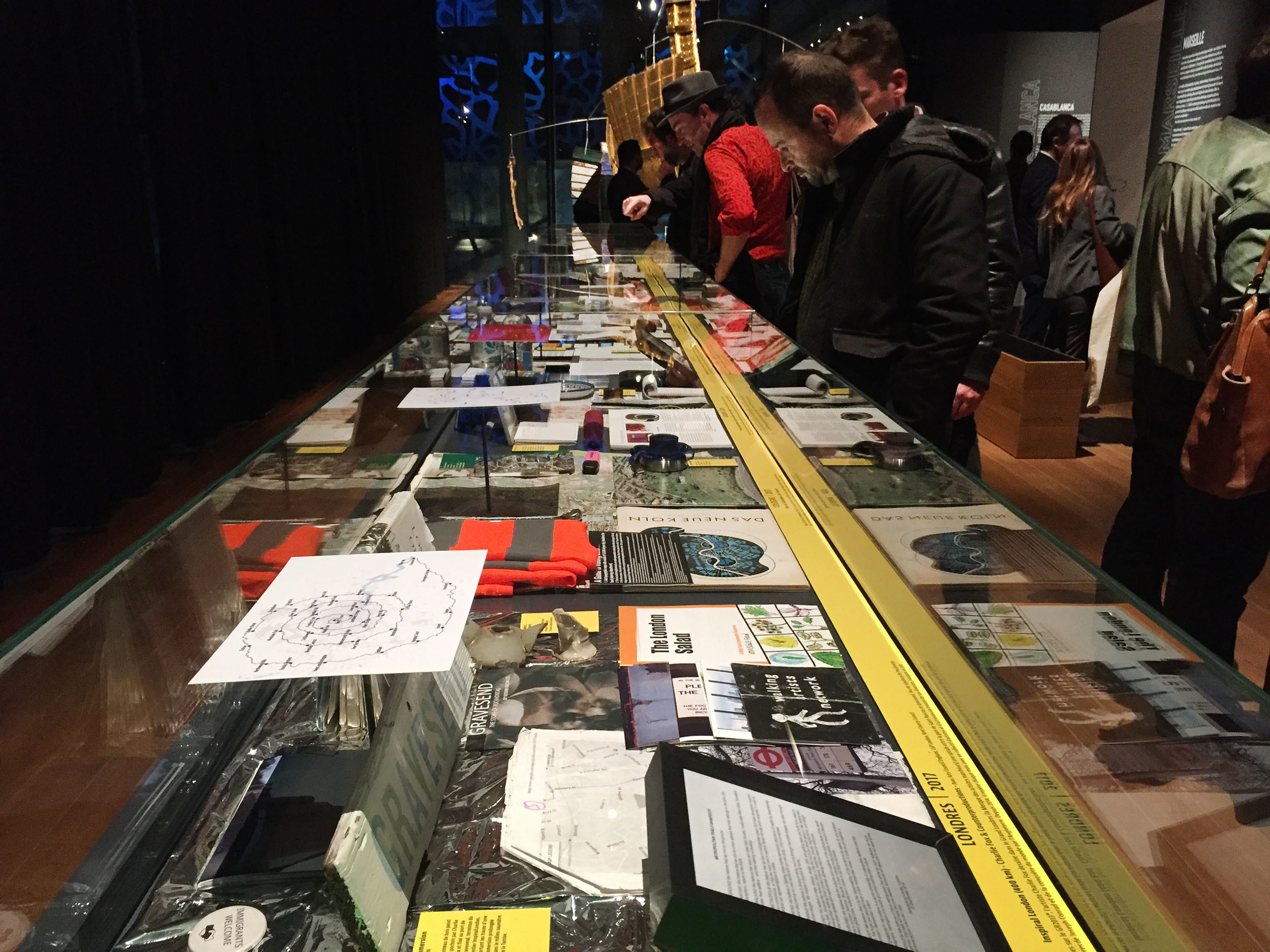
The Common Lands Trail at the Mucem
Marseille
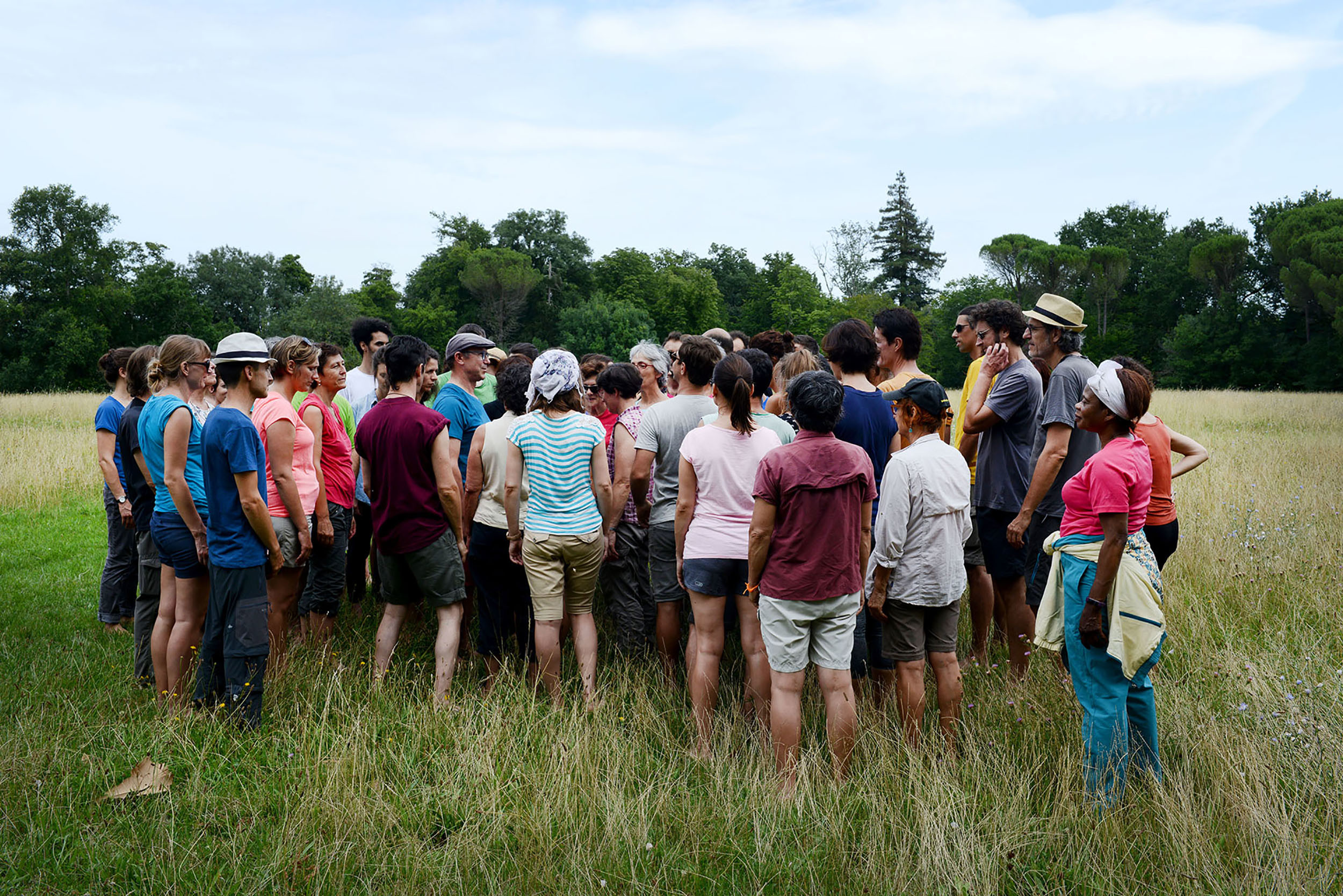
AtTEnTIOn à La mArcHE !
Bordeaux
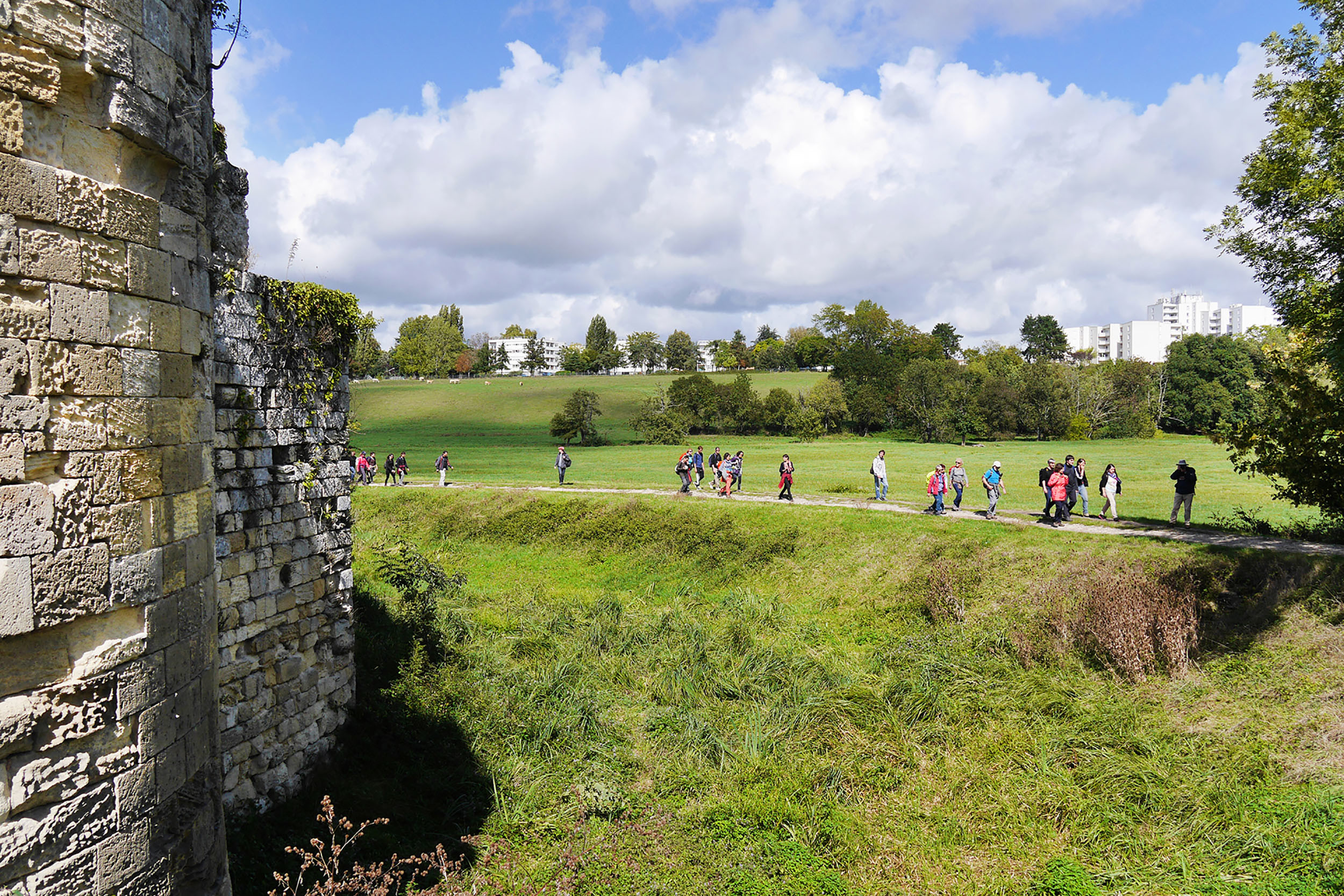
Walk around the Shelters #9
Le Haillan > Bruges

Walk around the Shelters #8
Lormont > Ambares-et-Lagrave

Walk around the Shelters #7
Floirac > Bassens
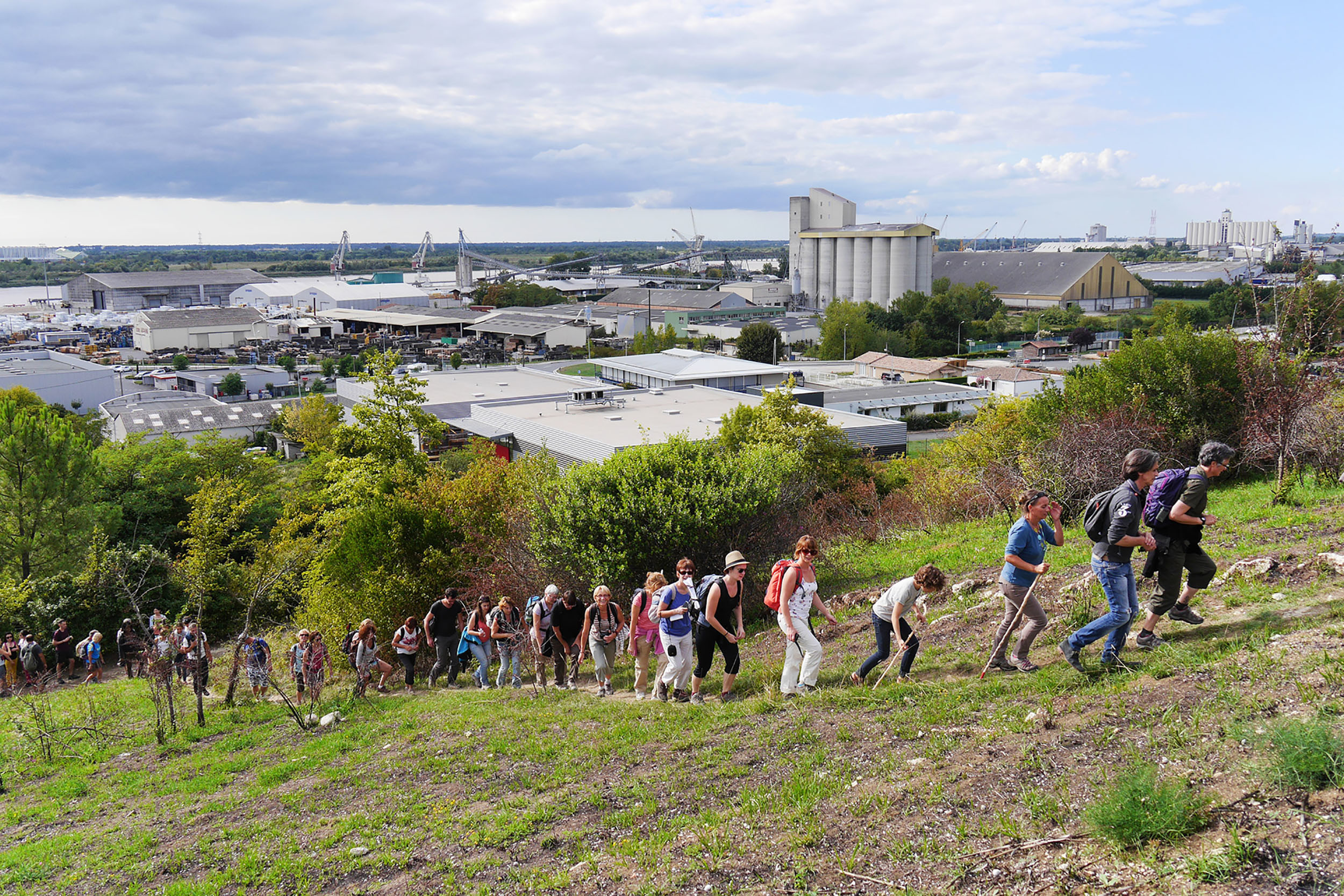
Walk around the Shelters #6
Lormont > Saint-Vincent-de-Paul

Walk around the Shelters #5
Pessac > Floirac

Tournée générale
Pau

Secret expedition
Lormont

Walk around the Shelters #4
Martignas-sur-Jalle > Bordeaux

Walk around the Shelters #3
Around the CUB, left bank
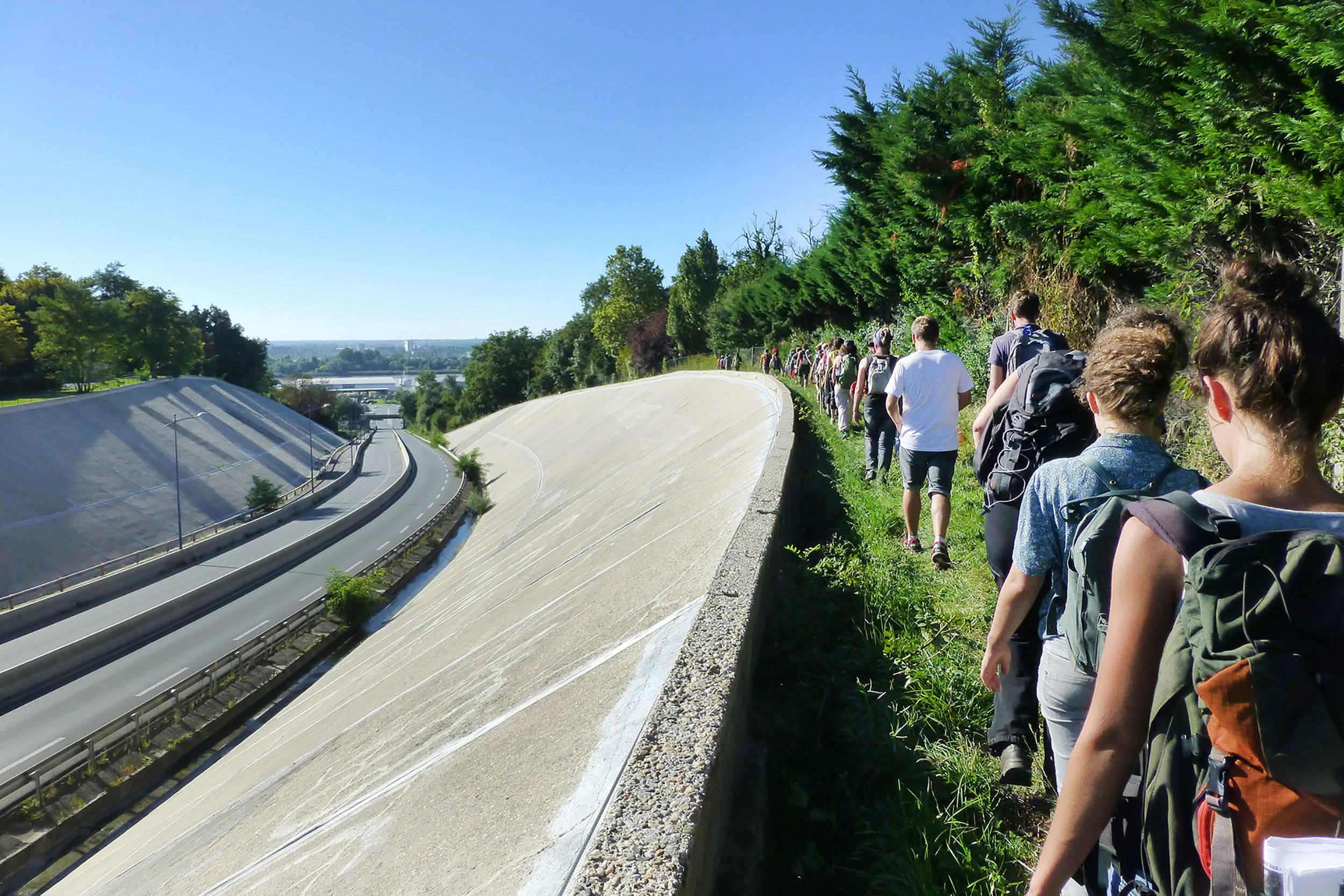
Walk around the Shelters #2
Ambes > Lormont
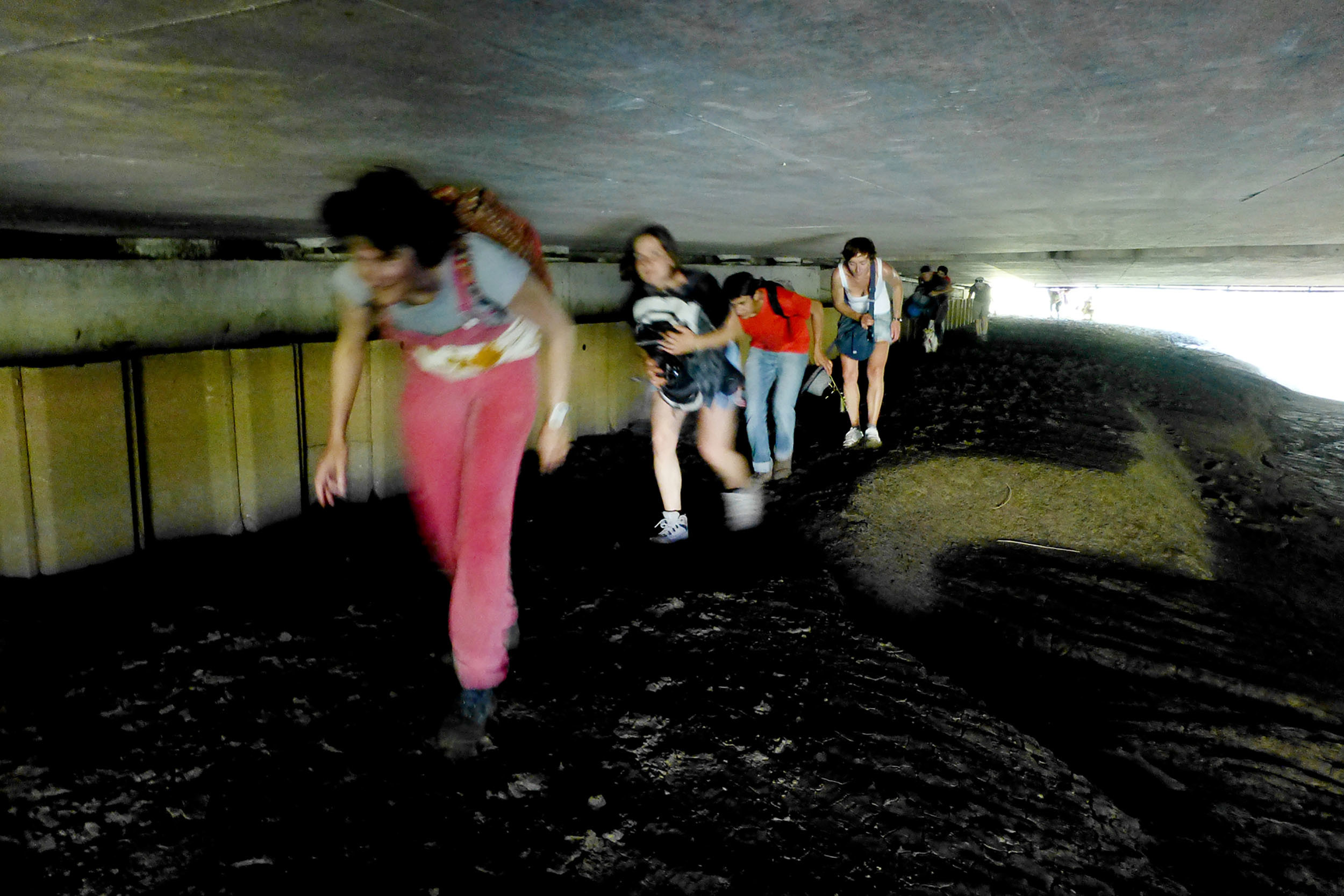
Walk around the Shelters #1
Gradignan > Bègles
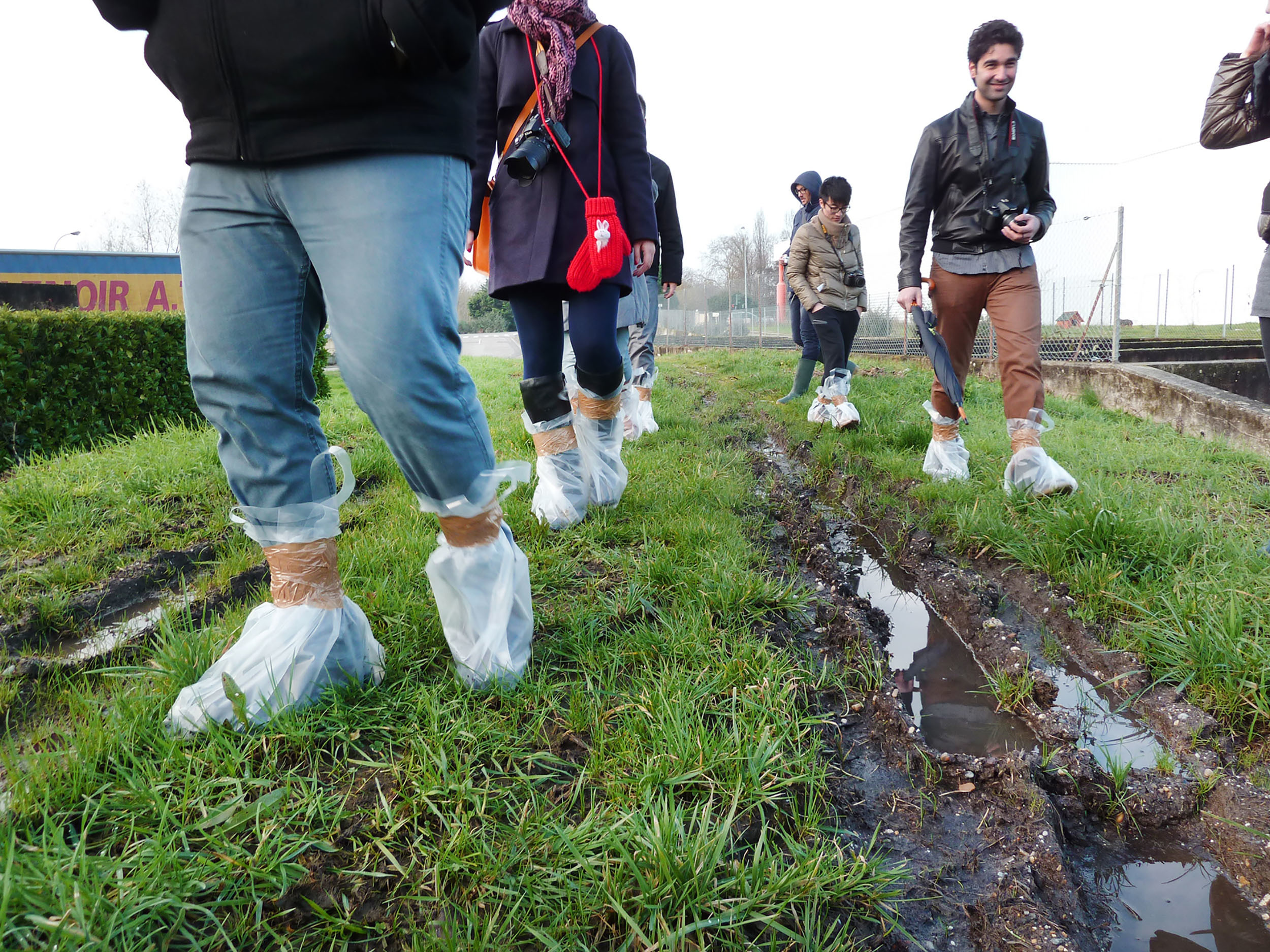
Rocade walk
Bègles

Guest Garden
Royan
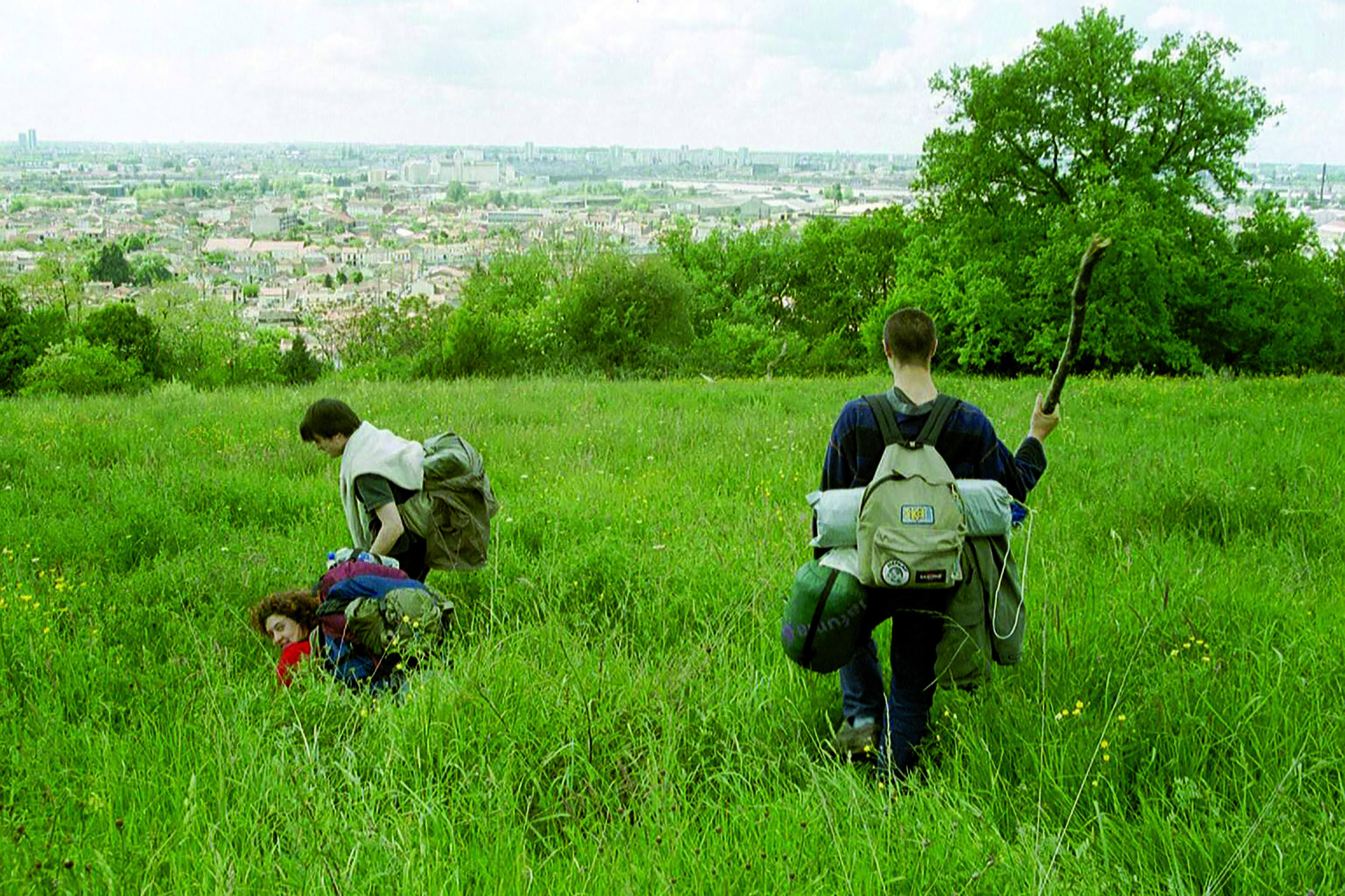
The crossing of the hillsides of Bordeaux
Floirac > Bassens

Suggested itineraries
Saint-Quentin-en-Yvelines
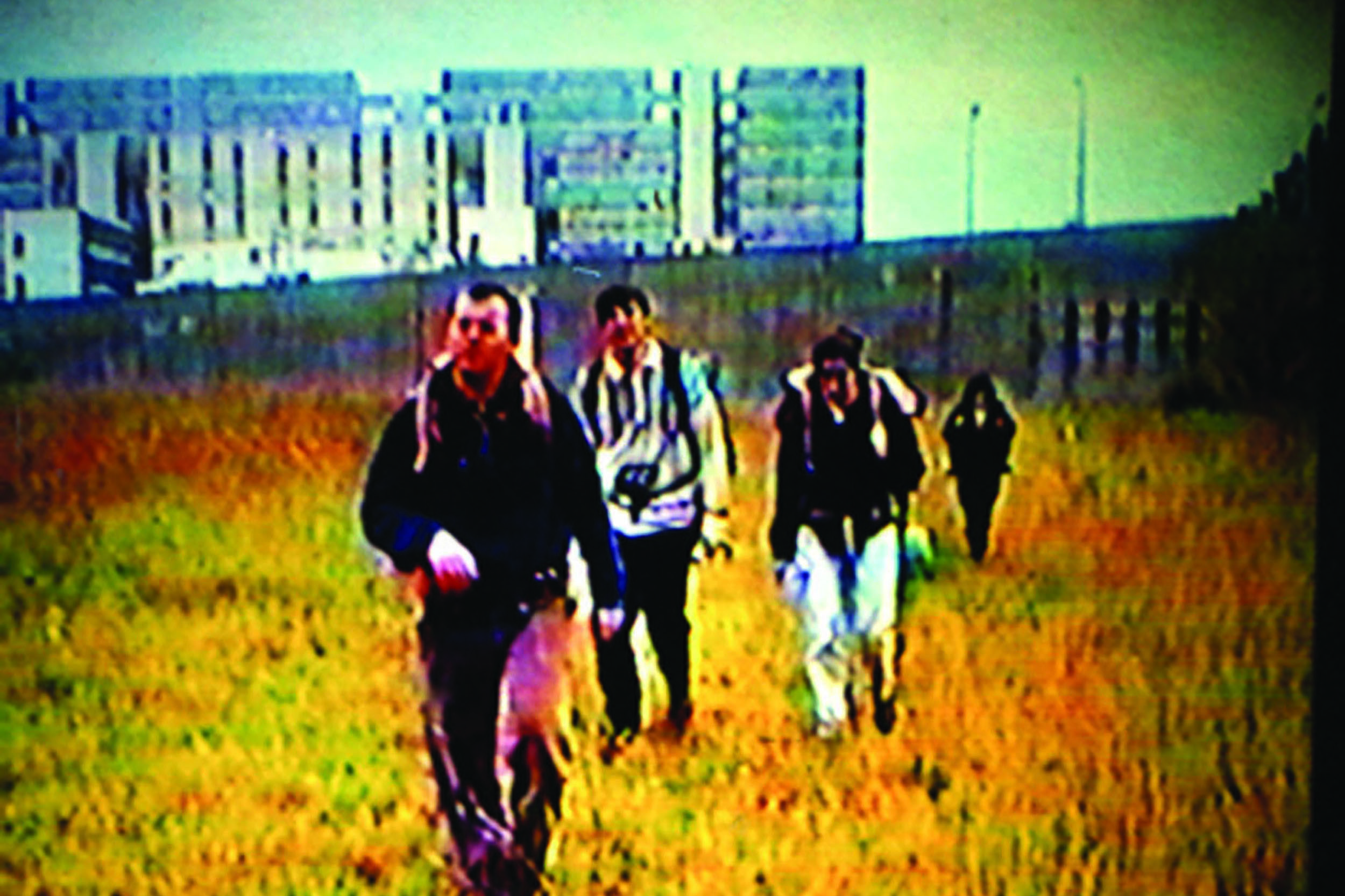
The Tour of Bordeaux
Bordeaux periphery, left bank

Zone Sweet Zone
Bordeaux outskirts
Last
projects
> all projectsAt the crossroads of art, territories and populations, our approach aims to promote the transition to sustainable, shared and welcoming cities, by proposing alternative ways of imagining and building our living environment and by exploring new forms of public space.

The Champicnic table
Pessac

The Secret Balconies # 3 – The Pinède balcony
Montpellier

Common lands trail
Exhibition Nouvelles Saisons, arc en rêve centre d'architecture Bordeaux
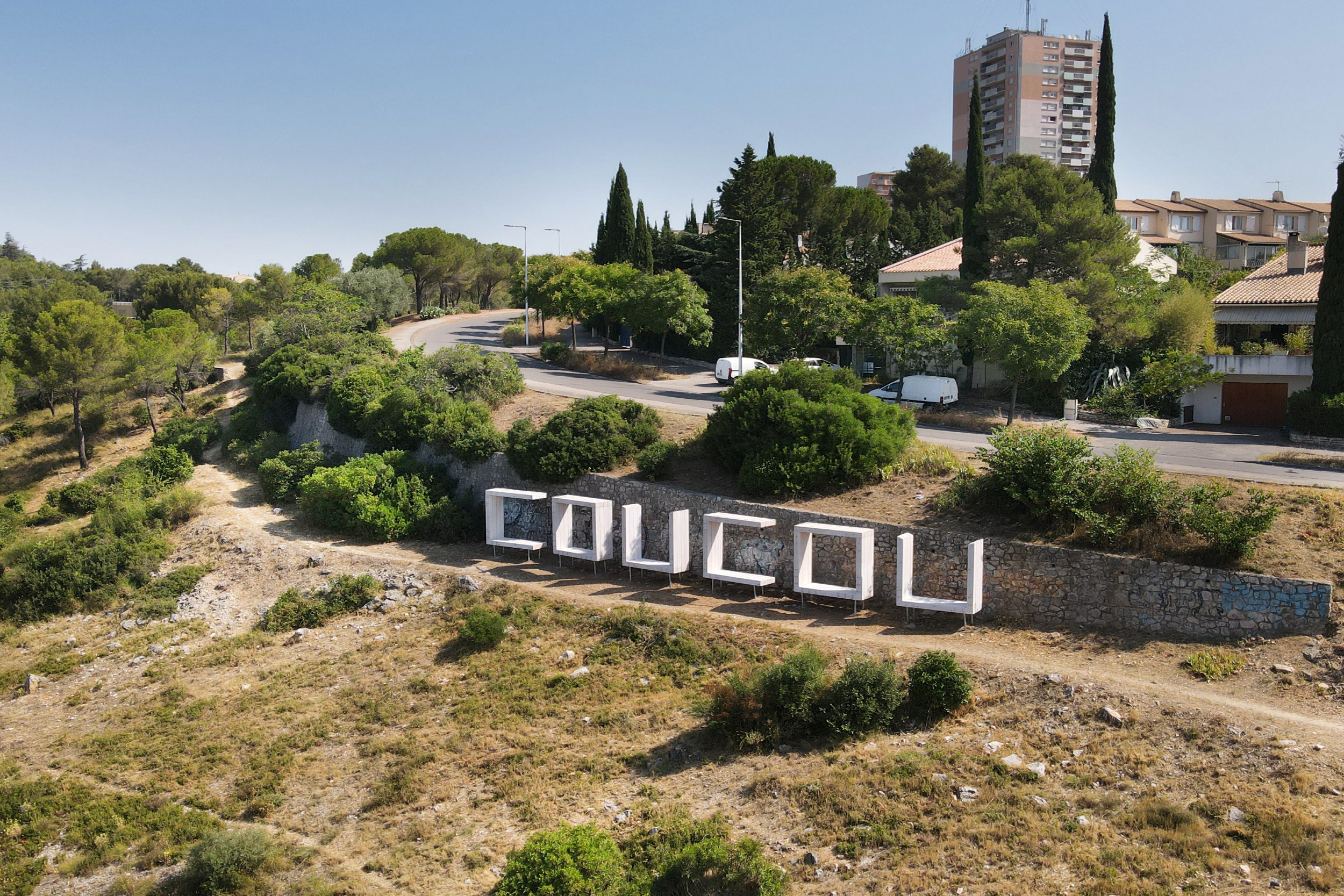
The Secret Balconies # 2 – Balcony des Hauts de Massane
Montpellier

The Secret Balconies # 1 – Balcony Larzac
Montpellier

The Portable Public Spaces
Lyon
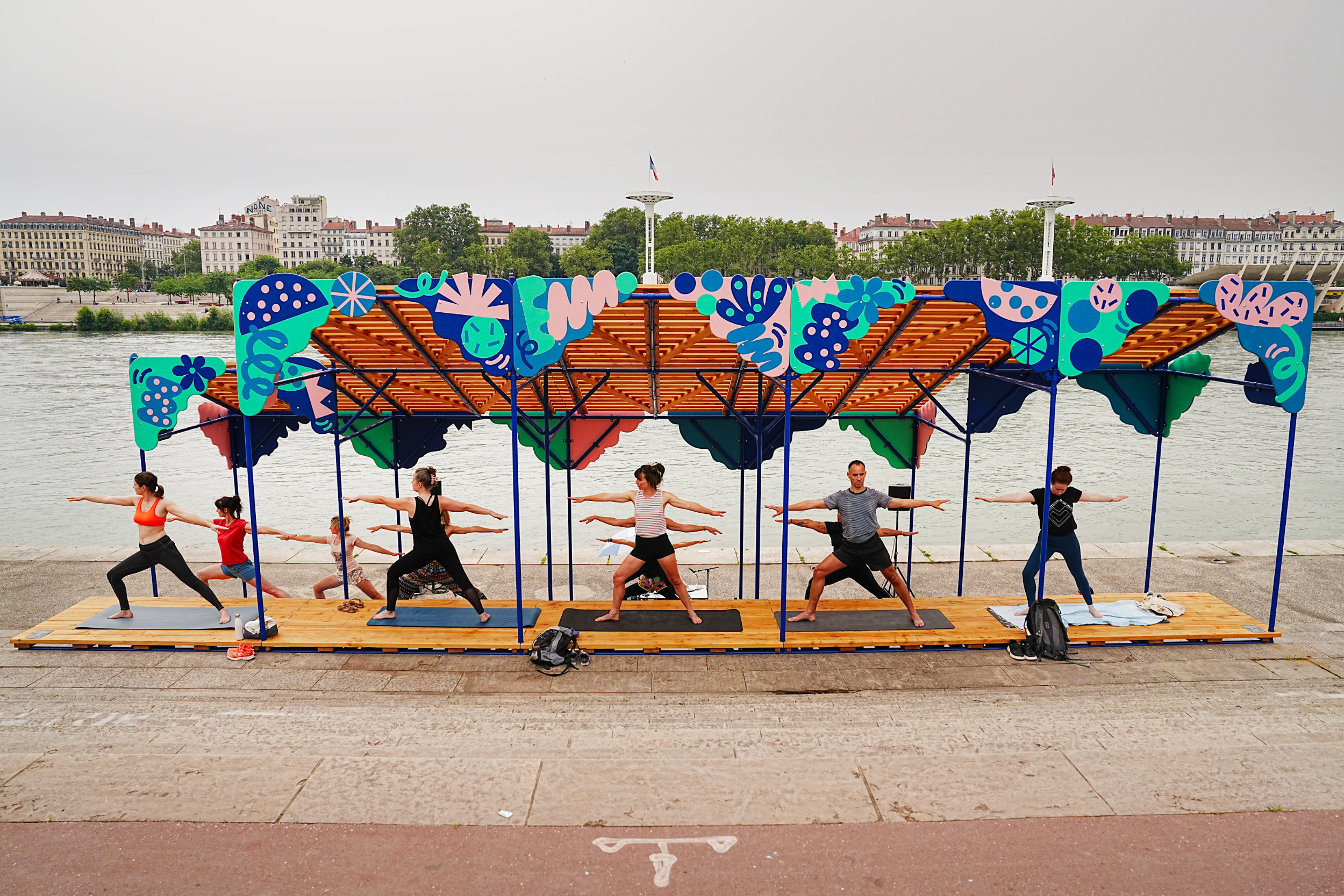
Modular shade canopy
Lyon


